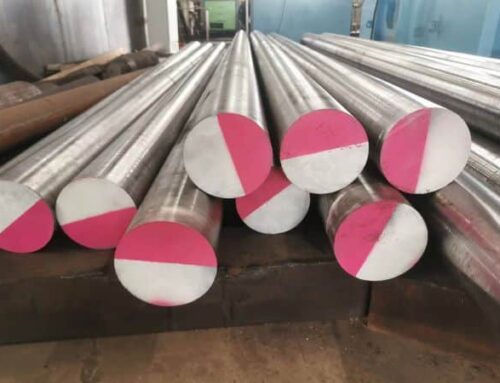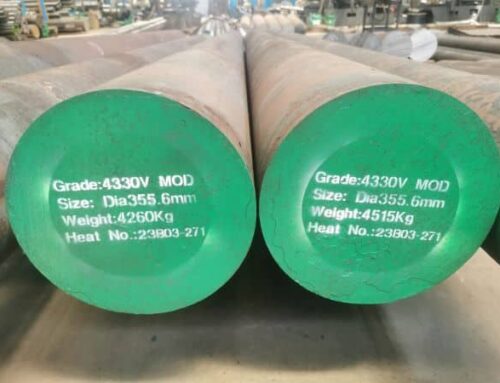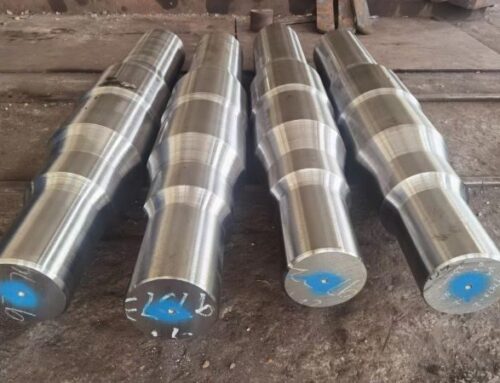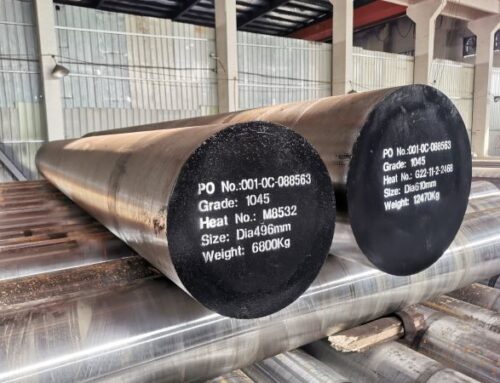SAE 4140 steel is a low-alloy steel grade under the standards of the American Society of Automotive Engineers(SAE).
In the quenched and tempered condition, SAE 4140 steel has good strength, toughness, wear resistance and fatigue resistance.Therefore, SAE 4140 steel is usually delivered in the pre-hardened condition(PH) with hardness 28-34HRC.
SAE 4140 alloy steel has many applications as forgings in the automotive, aerospace, oil and gas industries, typical uses are forging gears and shafts, spindles, clamps, clamps and collars.
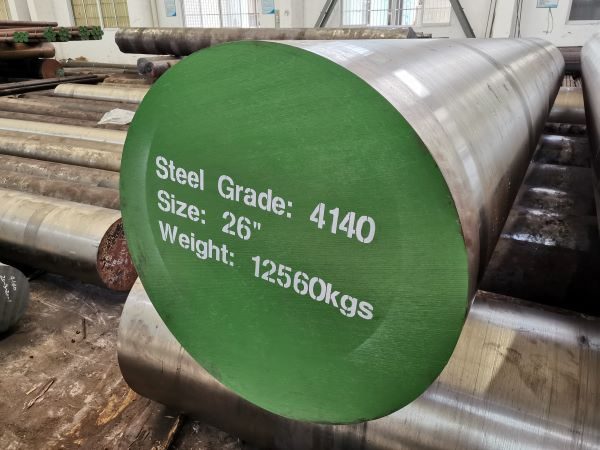
SAE 4140 STEEL CHEMICAL COMPOSITION
| Grade | C | Si | Mn | P | S | Cr | Mo |
| 4140 | 0.38-0.43 | 0.15-0.35 | 0.75-1.00 | ≤0.035 | ≤0.04 | 0.8-1.1 | 0.15-0.25 |
What is the difference between ASTM 4140,AISI 4140 and SAE 4140?
First of all, let’s make it clear that SAE, AISI and ASTM represent the three major American associations, namely the Society of Automotive Engineers (SAE), the American Iron and Steel Institute (AISI), and the American Society for Testing and Materials (ASTM).
Second, let’s make a conclusion,there is almost no difference between ASTM 4140, SAE 4140 and AISI 4140.They are just standard grades under different associations, which essentially point to the same material meaning, that is, the 4140 material in the ASTM A29 standard.
Thus, ASTM 4140, AISI 4140, or SAE 4140, though stated differently, any of the above is considered equivalent in most general industrial applications.
QUICK FAQS FOR SAE 4140 STEEL
Is SAE 4140 steel hard or soft?
Before answering this question, we need to know the specific application of 4140 steel.
4140 steel can be very soft, it can reach a surface hardness below 200HB by annealing.Obviously, under this hardness, its application field is also rare.
4140 steel can also be very hard. Usually, the ideal hardness can be achieved through quenching and tempering heat treatment to meet the needs of industrial applications.Usually the hardness can be controlled between 26-60HRC,but in actual production,medium-level hardness 26-34 HRC is widely used.
How do alloying elements affect the properties of SAE 4140 steel?
From the chemical composition in the above table, SAE 4140 steel contains 0.15-0.35% Si element, 0.75-1.0% Mn element, 0.8-1.1% Cr element, 0.15-0.25% Mo element, and no more than 0.25% Ni element.
Properly increasing the Si element can increase the strength and hardness of 4140 steel, but it will reduce its toughness.
Properly increasing the Ni and Mo elements of 4140 steel can enhance the hardenability of 4140 steel and improve its strength and impact toughness.
However, increasing the Cr element can increase the strength, hardness, hardenability and wear resistance, but at the same time reduce the plasticity and toughness.
Therefore, the balance between alloying elements of 4140 steel needs to be optimized according to product application requirements.
Can relevant international equivalent grades replace SAE 4140?
According to their own needs and economic benefits, each country develops a steel grade that meets its own requirements with reference to an international steel grade, which is the origin of the equivalent grade.So is the equivalent grade of SAE 4140 steel.
| Standard | Grade | C | Si | Mn | P | S | Cr | Ni | Mo |
| ASTM A29 | 4140 | 0.38-0.43 | 0.15-0.35 | 0.75-1.00 | ≤ 0.035 | ≤ 0.04 | 0.8-1.1 | – | 0.15-0.25 |
EN10083 | 42CrMo4 | 0.38-0.45 | ≤ 0.4 | 0.6-0.90 | ≤ 0.025 | ≤ 0.035 | 0.9-1.2 | – | 0.15-0.30 |
| 1.7225 | |||||||||
| JIS G4105 | SCM440 | 0.38-0.43 | 0.15-0.35 | 0.6-0.85 | ≤ 0.035 | ≤ 0.04 | 0.9-1.2 | – | 0.15-0.30 |
| GB 3077 | 42CrMo | 0.38-0.45 | 0.17-0.37 | 0.5-0.80 | ≤ 0.035 | ≤ 0.035 | 0.9-1.2 | – | 0.15-0.25 |
| BS 970 | EN19 | 0.35-0.45 | 0.15-0.35 | 0.5-0.80 | ≤ 0.035 | ≤ 0.035 | 0.9-1.5 | – | 0.2-0.40 |
As can be seen from the above table, the chemical composition of the equivalent grades of SAE4140 steel is slightly different, but the difference is not obvious.If it is used for simple applications, we can consider using each other as substitutes, but we do not recommend this when it comes to principled issues.
How is the Processing Performance of SAE 4140 Steel?
SAE 4140 steel has good machinability and hot workability, so it can be processed in many different processes, such as hot forging, hot rolling, cold drawing, quenching and tempering, etc.
SAE 4140 can be used directly in hot-rolled condition, also can be cold drawn for application of high precision parts.After quenching and tempering heat treatment, SAE 4140 steel is used to manufacture high-demand parts and tools which is widely used in aviation, aerospace, machinery, electronics, automobiles, and metallurgical industries.
SAE 4140 STEEL HEAT TREATMENT
- Normalizing:850-900℃,Cool in air.
- Annealing:830-850℃,Cool in furnace.
- Quenching: 840-880℃,Water/Oil quench.
- Tempering:220-700°C, coolin still air.
SAE 4140 Steel Quenching&Tempering Mechanical Property
| Grade | Tensile Strength | Yield Strength | Elongation | Reduction of Area | Impact Charpy-V |
| 4140 | ≥1100Mpa | ≥950Mpa | ≥12% | ≥45% | ≥80 |
850℃ Oil quenching,600℃ Tempering
SAE 4140 STEEL SUPPLY FORM & SIZE & TOLERANCE
Hot Forged Round bar:Φ80-Φ1000mm
Hot Rolled Round bar:Φ16-Φ260mm
Hot Forged Square bar: Max Thickness:500mm
Flat bar/Blcoks:Thickness :120-800mm ,Width:120-1500mm
| Surface Finish | Black-Forged | Black-Rolled | Turned | Grinding | Polished | Peeled | Cold Drawn |
| Tolerance | (0,+5mm) | (0,+1mm) | (0,+3mm) | Best h9 | Best h11 | Best H11 | Best H11 |
Heat treatment:Quenched and Tempered (+QT), Normalizing (+N), Annealing (+A)
Surface finish:Black / Rough turned / Peeled

